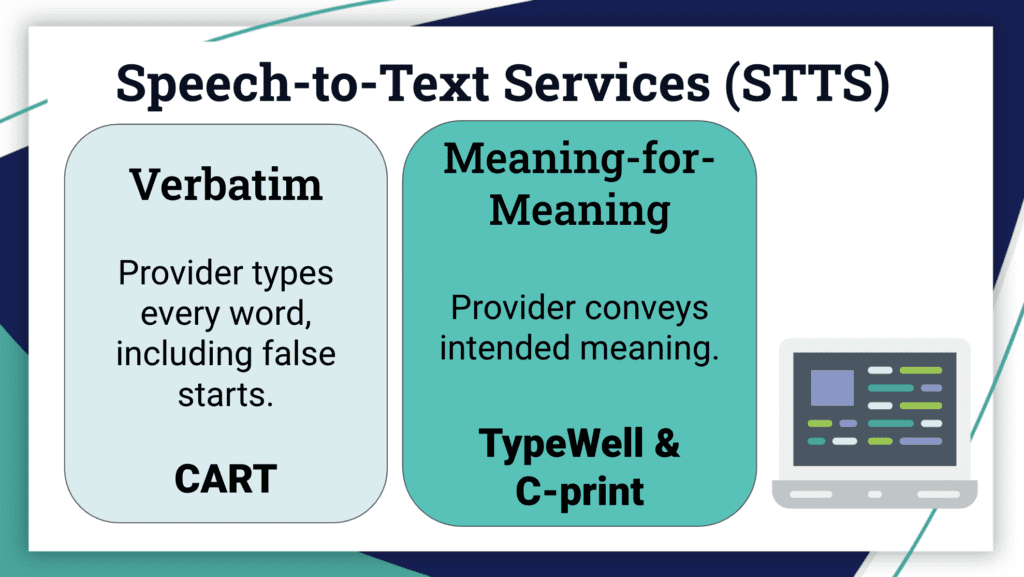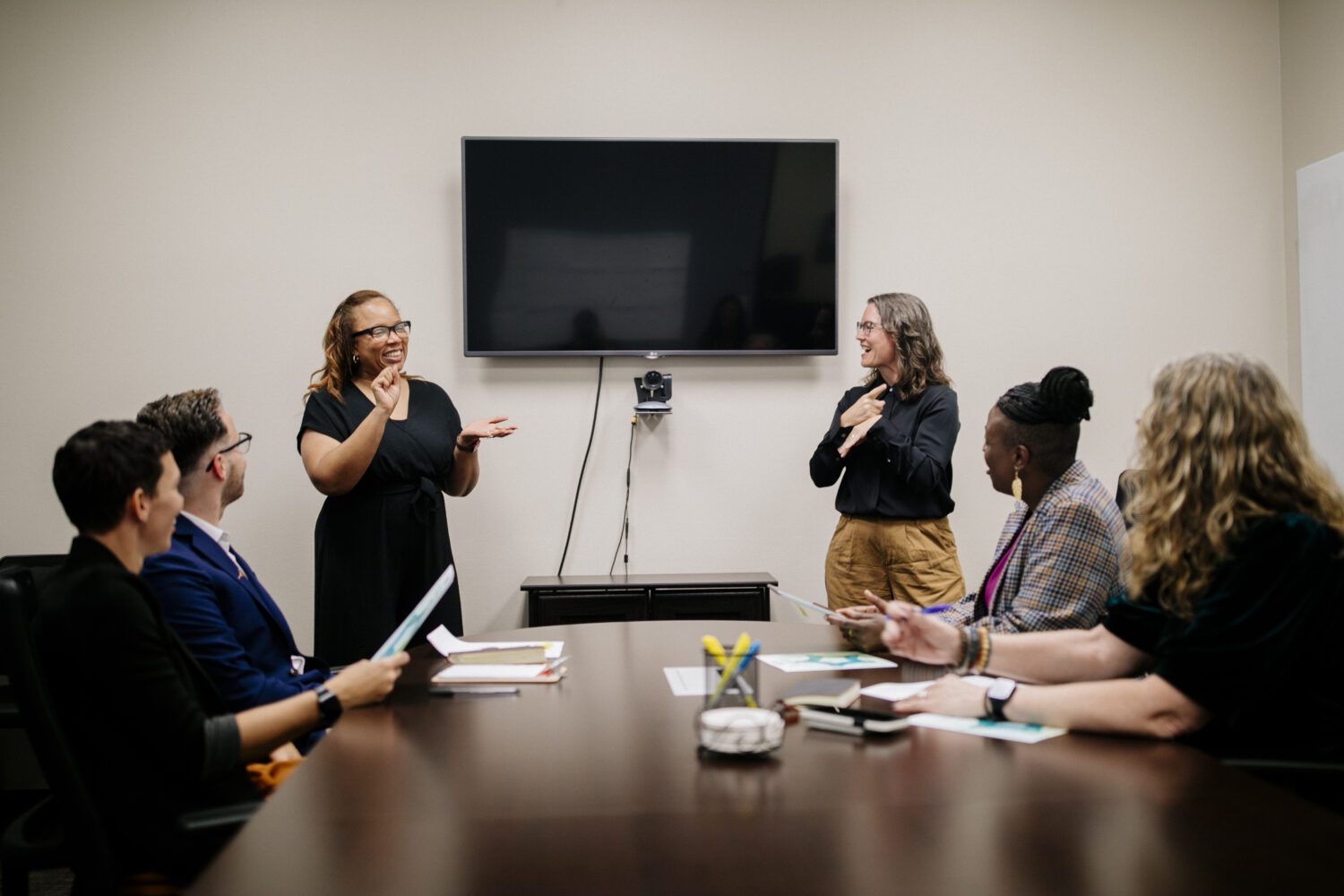On April 11th, 2024, NDC partnered with Global Alliance to host a webinar titled “CART, C-Print, TypeWell: Your Guide to Effective Speech-to-Text Solutions Webinar.” This event was designed to break down and simplify the different speech-to-text (STT) services available, making it easier for educators, parents, and students to understand available options.
The webinar covered key differences between popular STT systems like CART (Communication Access Real-Time Translation), TypeWell, and C-Print, and provided guidance on how to choose the most effective service based on individual student needs. The goal was to ensure that every participant left with a clear understanding of how these services can support deaf students in accessing spoken information in various educational and social settings.
The Importance of STT Services
STT services support deaf students by providing real-time access to spoken information. STT services support deaf students by providing real-time access to spoken information during events. This is a different service than captioned media which provides captioning for audio-recorded material—in fact, STT services parallel the type of real-time access provided by sign language interpreting. These services can be used in various settings across campuses, such as in classrooms, extracurricular activities, athletics, religious ceremonies, and graduations. Not to mention that STT services may be used in dual accommodations situations, as well.
Making Informed Decisions
When considering if STT services would be a reasonable accommodation, it’s important to consider the student’s needs and preferences. Here are some points to keep in mind:
- STT services are not a replacement for note-taking. It is intended to provide real-time access to communication.
- It is common practice for deaf students to have access to transcripts after STT services, however it is recommended for DS offices to determine internal processes for if STT transcripts are shared with others outside of the deaf student as this information could contain confidential information.
- When gathering feedback from students on STT services, ask for information on how STT services were provided based on accuracy, speed, readability, and how well the provider handled things like speaker identification and environmental sounds.
- When providing remote STT services, consider whether the class environment, class structure, and technology needs would be conducive for remote services. It is important to customize training for both instructors and students to address the specific nuances of remote services.
- Human STT providers are more accurate than Automatic Speech Recognition (ASR). ASR has lower accuracy (60-70%) and factors such sound quality, background noise, and speaker variations impact its accuracy. Human STT providers can handle technical jargon and provide better punctuation and speaker identification.
- Under the Americans with Disabilities Act (ADA), institutions must provide effective accommodations. The high cost of human STT services is rarely considered an undue burden.
What Can You Do?
Overall, STT services is an accommodation option that provides equal access to education for deaf students. Here’s how educators and institutions can make informed decisions to effectively support deaf students’ needs:
- Learn About STT Options: Educators and administrators should familiarize themselves with the various STT services available, such as CART, TypeWell, and C-Print. Understand the key differences, like how CART provides near-verbatim transcription while TypeWell captures the essence of what is said.
- Assess Student Needs: Evaluate each student’s specific needs and preferences. Some students might need the detailed transcription provided by CART, while others might prefer the summary style of TypeWell. Consider factors like the student’s level of hearing loss, their comfort with technology, and their learning style.
- Trial and Feedback: Implement trial periods for different STT services to see which works best for the student. Gather feedback from students, teachers, and parents to make informed adjustments.
- Provide Training, Evaluate, and Adjust Accordingly: Ensure that both students and teachers are trained to use the chosen STT services effectively. This includes understanding how to operate the technology and how to communicate effectively with transcribers. Regularly assess the effectiveness of the chosen STT services. Make adjustments based on ongoing feedback and changes in student needs.
- Legal Compliance: STT services are recognized as an effective communication option under the ADA. As a reminder, costs for accommodations are not likely to be accepted under undue burden claims.
- Promote Awareness: Raise awareness among staff and students about the importance of STT services. Create an inclusive environment where the needs of deaf and hard-of-hearing students are understood and respected.












